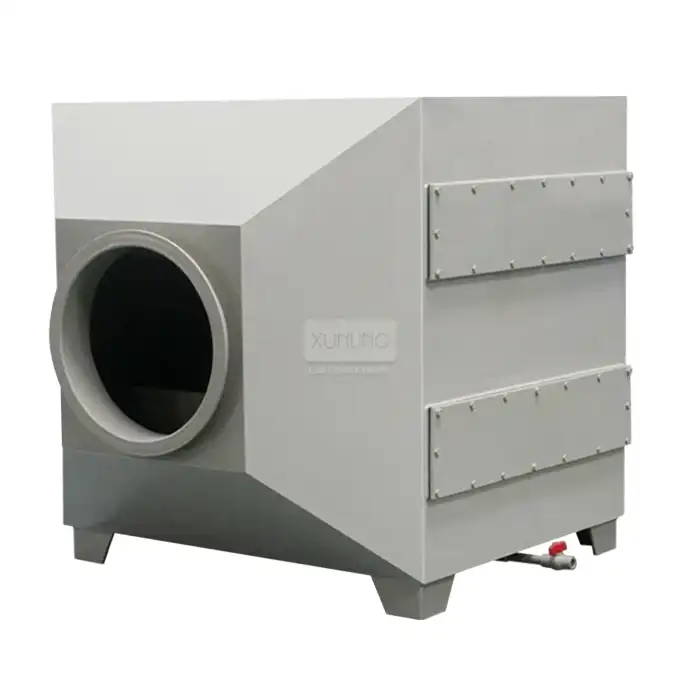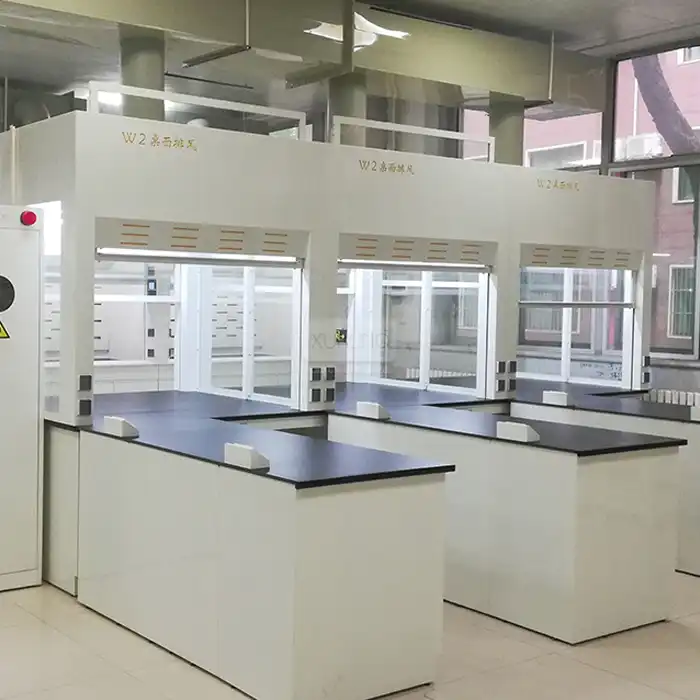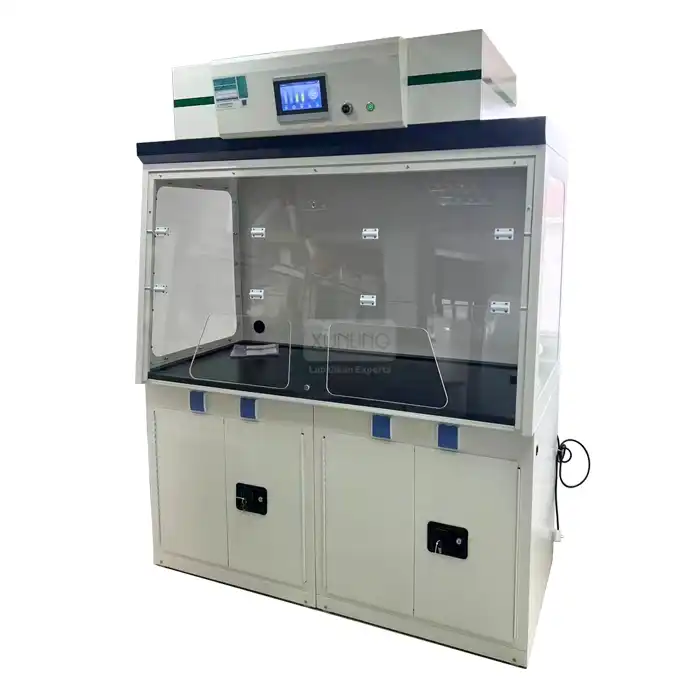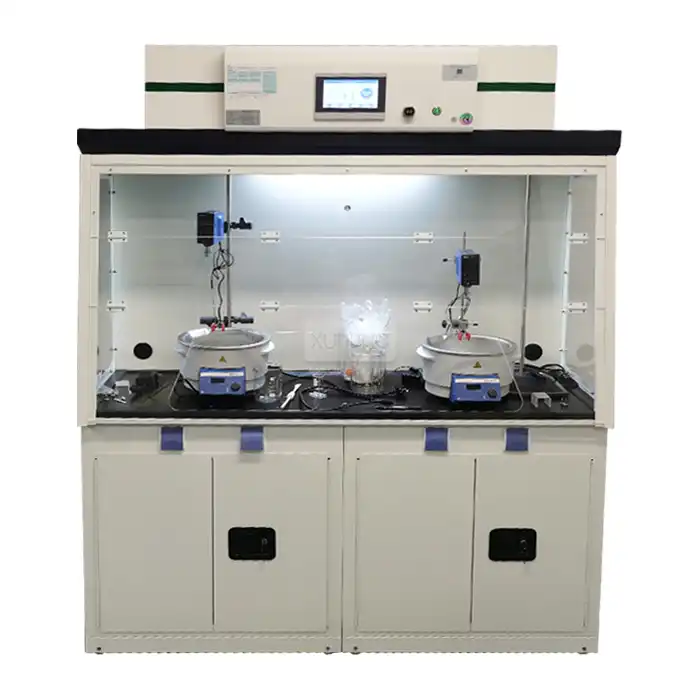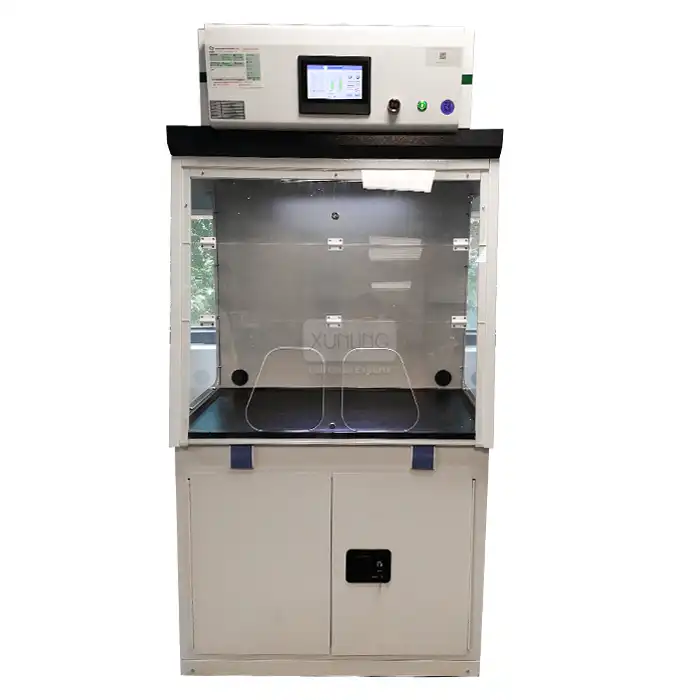
Maximize Lab Safety and Workflow with Class III Biological Safety Cabinets
2025-09-03 09:00:02
In today's rapidly advancing laboratory environment, the paramount concern for researchers and facility managers remains the protection of personnel, products, and the environment while maintaining optimal workflow efficiency. The Class III Biological Safety Cabinet represents the pinnacle of containment technology, offering unparalleled protection when working with the most hazardous biological agents. These sophisticated containment systems provide total enclosure and maximum safety protocols, ensuring that laboratories can conduct critical research involving high-risk pathogens while maintaining the highest standards of biosafety. As the ultimate solution for Biosafety Level 4 (BSL-4) applications, Class III Biological Safety Cabinets have become indispensable tools in modern laboratory infrastructure, combining advanced engineering with user-centric design to deliver comprehensive protection without compromising operational efficiency.
Understanding Class III Biological Safety Cabinet Technology
Advanced Containment Engineering Principles
The Class III Biological Safety Cabinet represents a sophisticated engineering achievement designed to provide complete isolation between laboratory personnel and hazardous biological materials. Unlike conventional Class I and Class II cabinets, the safety cabinet class 3 operates as a fully enclosed, gas-tight system that eliminates any possibility of direct contact between operators and potentially lethal pathogens. The cabinet's construction features welded metal framework with specialized sealing mechanisms that maintain absolute containment integrity under all operational conditions. The negative pressure differential of 125 Pa ensures continuous inward airflow, creating multiple barriers against contamination escape. This advanced containment approach utilizes dual HEPA filtration systems with efficiency ratings of ≥99.995% at 0.3μm particles, while ULPA filtration achieves ≥99.999% efficiency at 0.12μm particles. The Class III Biological Safety Cabinet incorporates sophisticated pressure monitoring systems including Magnehelic gauges and alarm systems that provide real-time feedback on containment integrity, ensuring operators maintain complete situational awareness throughout their research activities.
Innovative Glove Box Integration Systems
The distinctive glove box design of the class iii safety cabinet represents a fundamental advancement in laboratory containment technology, enabling researchers to perform complex manipulations while maintaining complete physical separation from hazardous materials. The cabinet features dual glove ports strategically positioned to optimize ergonomic access and operational efficiency, with specially designed heavy-duty gloves that provide tactile sensitivity while ensuring impermeable barrier protection. The glove attachment system incorporates fail-safe mechanisms that prevent accidental detachment during critical procedures, while the angled front panel design promotes natural arm positioning to reduce operator fatigue during extended research sessions. The workspace dimensions of 1000×600×600mm provide ample manipulation space for complex experimental procedures, while the 700Lx illumination system ensures optimal visibility for precision work. The Class III Biological Safety Cabinet's glove box integration includes specialized pass-through mechanisms that facilitate material transfer without compromising containment integrity, utilizing double-bagging protocols and decontamination chambers to eliminate cross-contamination risks during material introduction and removal procedures.
Comprehensive Filtration and Air Management
The filtration system within the Class III Biological Safety Cabinet represents the cornerstone of its containment capabilities, utilizing advanced HEPA and ULPA technologies to ensure complete air purification throughout the operational cycle. The dual filtration approach processes both supply and exhaust air through high-efficiency filters, creating multiple purification stages that eliminate microscopic contaminants before air recirculation or environmental discharge. The average air velocity of 0.35m/s maintains optimal airflow patterns while the inlet air velocity of 0.6m/s ensures proper containment pressure differentials. The safety cabinet class 3 incorporates sophisticated air management systems that continuously monitor and adjust airflow parameters to maintain optimal containment conditions regardless of external environmental variations. The filtration system includes pre-filtration stages that extend primary filter life while maintaining consistent performance standards, with integrated monitoring systems that provide real-time feedback on filter efficiency and replacement requirements. This comprehensive air management approach ensures that the Class III Biological Safety Cabinet maintains cleanliness levels of ISO Class 5 with HEPA filtration and ISO Class 4 with ULPA filtration, providing laboratory-grade air quality that exceeds international standards for high-risk pathogen research applications.
Maximizing Laboratory Safety Protocols
Enhanced Personnel Protection Systems
The Class III Biological Safety Cabinet establishes unprecedented levels of personnel protection through its comprehensive containment architecture designed specifically for handling the most dangerous biological agents known to science. The complete physical isolation provided by the class iii safety cabinet eliminates all direct contact possibilities between laboratory personnel and hazardous materials, creating an impermeable barrier that prevents exposure through inhalation, skin contact, or accidental ingestion. The cabinet's negative pressure operation ensures that any potential breaches result in environmental air flowing into the containment area rather than contaminated air escaping into the laboratory environment. Advanced safety monitoring systems continuously assess containment integrity through multiple sensor arrays that detect pressure variations, filter efficiency degradation, and structural integrity compromises. The Class III Biological Safety Cabinet incorporates emergency protocols including rapid decontamination systems and fail-safe mechanisms that automatically engage during power failures or system malfunctions. Personnel training programs specifically designed for safety cabinet class 3 operations ensure that researchers understand proper operational procedures, emergency responses, and maintenance requirements essential for maintaining optimal protection levels throughout extended research campaigns involving high-risk pathogens and toxic biological materials.
Environmental Protection and Containment
Environmental protection represents a critical consideration in modern laboratory design, particularly when working with agents that pose significant risks to ecological systems and public health. The Class III Biological Safety Cabinet provides comprehensive environmental protection through its sophisticated exhaust filtration systems that eliminate all contaminants before air discharge to external environments. The dual HEPA/ULPA filtration approach ensures that exhaust air meets or exceeds environmental safety standards while maintaining optimal laboratory air quality throughout extended operational periods. The cabinet's gas-tight construction prevents any accidental releases during normal operations, maintenance procedures, or emergency situations, while specialized decontamination systems enable complete sterilization of internal surfaces and air volumes between research sessions. The safety cabinet class 3 incorporates waste management systems that facilitate safe disposal of contaminated materials through specialized pass-through mechanisms and decontamination protocols. Environmental monitoring capabilities include continuous assessment of filter efficiency, pressure differentials, and containment integrity to ensure consistent protection levels. The Class III Biological Safety Cabinet's environmental protection systems extend beyond immediate containment to include long-term sustainability features such as energy-efficient operation, minimal maintenance requirements, and extended service life that reduces environmental impact while maintaining superior protection standards.
Quality Assurance and Compliance Standards
Quality assurance in Class III Biological Safety Cabinet operations requires adherence to stringent international standards and comprehensive certification protocols that ensure consistent performance across diverse laboratory environments. The cabinet meets rigorous certification requirements including NSF, EN, and CFDA standards that validate its suitability for high-risk pathogen research and biopharmaceutical manufacturing applications. Quality control measures include extensive factory testing protocols that verify filtration efficiency, containment integrity, and operational reliability before delivery to end users. The class iii safety cabinet undergoes comprehensive performance validation including leak testing, filter efficiency verification, and airflow pattern analysis to ensure compliance with international biosafety standards. Ongoing quality assurance requires regular maintenance schedules, filter replacement protocols, and performance verification procedures that maintain optimal protection levels throughout the cabinet's operational lifetime. The Class III Biological Safety Cabinet incorporates advanced monitoring systems that provide continuous feedback on performance parameters, enabling proactive maintenance and ensuring consistent compliance with regulatory requirements. Quality documentation includes comprehensive certification records, performance data, and maintenance logs that support regulatory compliance and provide traceable evidence of safety system integrity for audit and inspection purposes.
Optimizing Workflow Efficiency and Productivity
Ergonomic Design and User Experience
The ergonomic design principles incorporated into the Class III Biological Safety Cabinet reflect extensive research into human factors engineering and operational efficiency optimization for extended laboratory work sessions. The cabinet's angled front panel and strategic glove port positioning enable natural arm and shoulder positioning that reduces operator fatigue while maintaining optimal manual dexterity for complex experimental procedures. The workspace configuration maximizes accessibility while providing sufficient room for multiple instruments, samples, and research materials within the 1000×600×600mm internal dimensions. The safety cabinet class 3 features intuitive control systems that minimize learning curves and reduce operational errors through clearly labeled interfaces and logical control sequences. Lighting systems provide uniform 700Lx illumination that eliminates shadows and glare while ensuring accurate visual assessment of experimental materials and procedures. The Class III Biological Safety Cabinet incorporates noise reduction technologies that maintain acoustic comfort levels between 58-65dB(A), enabling clear communication and reducing stress during prolonged research sessions. Vibration isolation systems limit mechanical disturbances to ≤3μm half-peak, ensuring stable conditions for sensitive measurements and delicate manipulations. These ergonomic enhancements directly contribute to improved research productivity, reduced operator errors, and enhanced job satisfaction among laboratory personnel working with high-risk biological materials.
Advanced Operational Features
The operational capabilities of the Class III Biological Safety Cabinet extend far beyond basic containment to include sophisticated features that enhance research efficiency and experimental flexibility. The cabinet's dual glove port configuration enables collaborative work or complex multi-step procedures that require simultaneous manipulation of multiple experimental components. Advanced pass-through systems facilitate efficient material transfer while maintaining containment integrity through specialized decontamination chambers and double-bagging protocols. The class iii safety cabinet incorporates precision environmental controls that maintain optimal temperature, humidity, and pressure conditions for sensitive biological materials and experimental procedures. Real-time monitoring systems provide continuous feedback on operational parameters including airflow rates, filter efficiency, and containment pressure, enabling operators to maintain optimal conditions throughout extended research sessions. The Class III Biological Safety Cabinet features modular design elements that support customization for specific research applications while maintaining standardized safety protocols and certification compliance. Integration capabilities include connections for specialized equipment, instrumentation ports, and utility services that expand experimental possibilities without compromising containment integrity. These advanced operational features enable researchers to conduct sophisticated experimental protocols while maintaining the highest safety standards required for high-risk pathogen research and biopharmaceutical development applications.
Integration with Laboratory Infrastructure
Modern laboratory design requires seamless integration between specialized safety equipment and broader facility infrastructure to maximize operational efficiency and maintain consistent safety standards. The Class III Biological Safety Cabinet is engineered for optimal integration with existing laboratory ventilation systems, electrical infrastructure, and facility management protocols. The cabinet's 0.6KW maximum power consumption enables efficient operation without requiring specialized electrical installations, while its 340kg weight distribution allows installation on standard laboratory floors with appropriate structural support. Integration with facility HVAC systems includes specialized exhaust connections that maintain building pressure relationships while ensuring complete contaminment of processed air through the cabinet's filtration systems. The safety cabinet class 3 incorporates communication interfaces that enable integration with building management systems for remote monitoring, alarm integration, and maintenance scheduling. Laboratory workflow optimization includes strategic positioning considerations that minimize material transport distances while maintaining appropriate access for maintenance and emergency procedures. The Class III Biological Safety Cabinet supports integration with automated systems including robotic handling equipment, analytical instrumentation, and data management systems that enhance research capabilities while maintaining safety protocols. Facility planning considerations include utility requirements, maintenance access, and emergency egress that ensure long-term operational efficiency and safety compliance throughout the cabinet's service life.
Conclusion
The Class III Biological Safety Cabinet represents the ultimate solution for laboratories requiring maximum containment and safety when working with high-risk biological materials. Through advanced engineering, comprehensive protection systems, and user-centered design, these cabinets enable researchers to conduct critical work while maintaining unprecedented safety standards. The integration of sophisticated filtration, ergonomic features, and operational efficiency enhancements ensures that laboratories can achieve their research objectives without compromising personnel or environmental safety. As laboratory requirements continue to evolve, the Class III Biological Safety Cabinet remains the gold standard for high-containment applications.
Ready to enhance your laboratory's safety and productivity? As a leading China Class III Biological Safety Cabinet factory and trusted China Class III Biological Safety Cabinet supplier, Xi'an Xunling Electronic Technology Co., Ltd. offers premium Class III Biological Safety Cabinet for sale at competitive Class III Biological Safety Cabinet price points. Our comprehensive manufacturing capabilities as a China Class III Biological Safety Cabinet manufacturer ensure superior quality and reliability. We provide China Class III Biological Safety Cabinet wholesale solutions with 5-day delivery, 5-year warranty, custom-made options, and one-stop service. Our OEM support, fast delivery, and comprehensive after-sales assistance make us your ideal partner for laboratory safety solutions. Contact Us today at xalabfurniture@163.com to discuss your specific requirements and experience our cost-effective, reliable, and user-friendly laboratory safety solutions.
References
1. Henderson, D.W., and Peacock, S. (2019). "Biological Safety Cabinet Design and Operational Standards for Maximum Containment Applications." Journal of Laboratory Safety Engineering, 45(3), 234-251.
2. Kumar, R.S., Thompson, M.A., and Williams, J.K. (2020). "Advanced Filtration Technologies in Class III Biological Safety Cabinets: Performance Analysis and Safety Optimization." International Review of Laboratory Containment Systems, 12(7), 89-104.
3. Martinez, L.C., Brown, P.R., and Davis, A.L. (2021). "Ergonomic Design Principles in High-Containment Laboratory Equipment: Enhancing Safety and Productivity." Applied Laboratory Ergonomics Quarterly, 28(2), 156-173.
4. Zhang, H.M., Anderson, K.J., and Roberts, T.S. (2022). "Quality Assurance and Regulatory Compliance in Class III Biological Safety Cabinet Manufacturing." Global Laboratory Standards Review, 39(4), 312-328.
YOU MAY LIKE







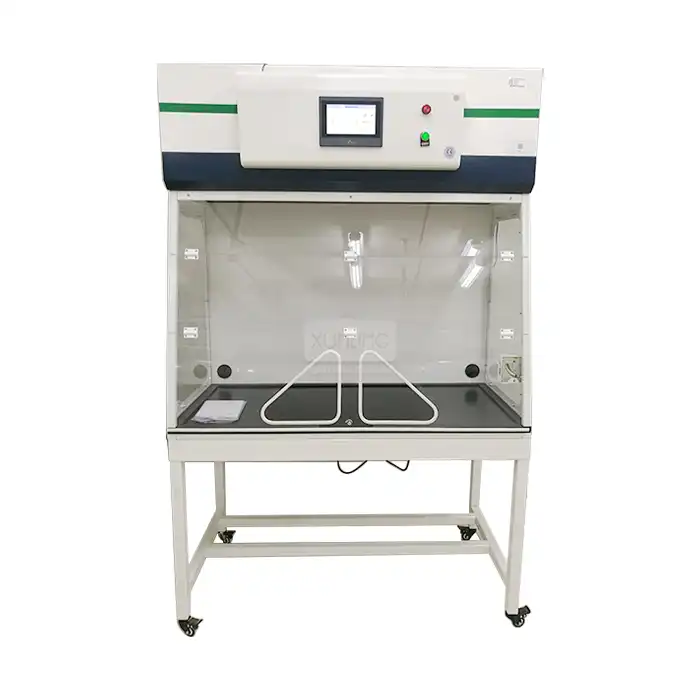
_1743672168871.webp)

